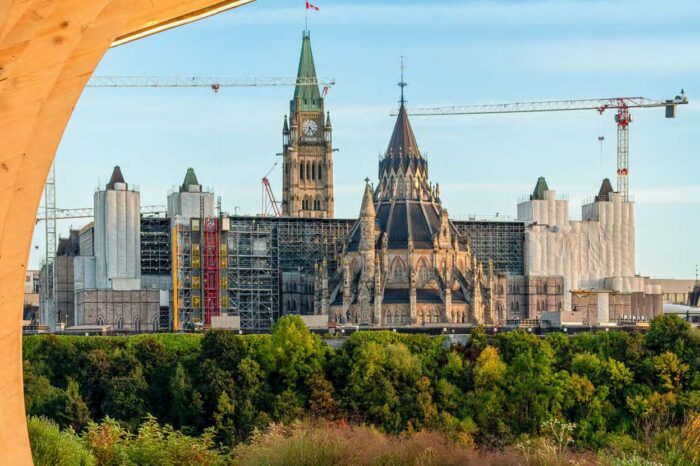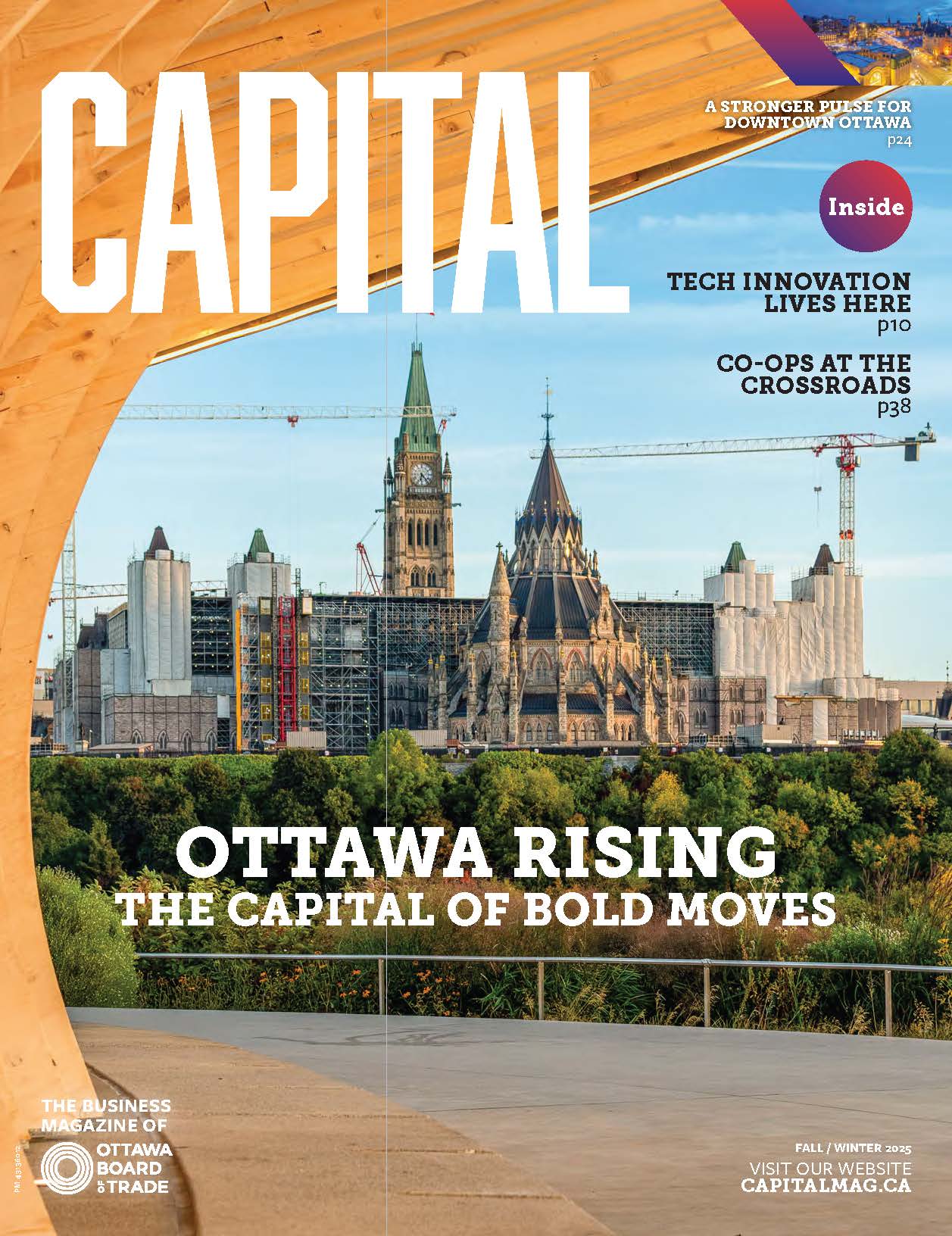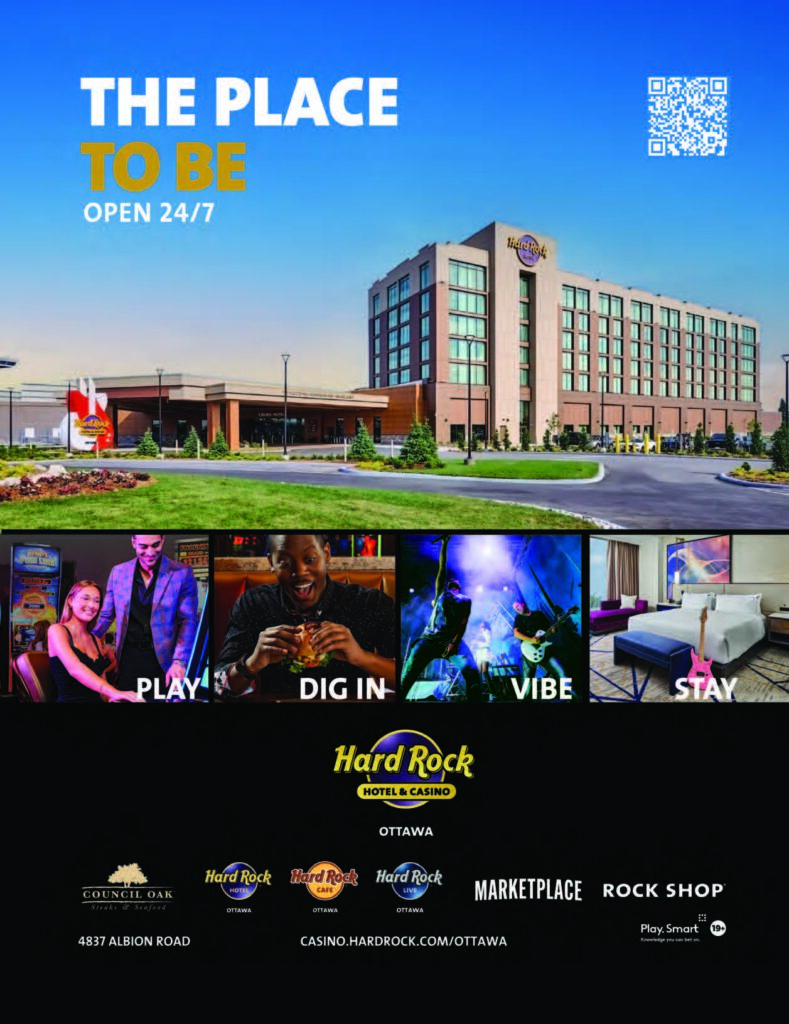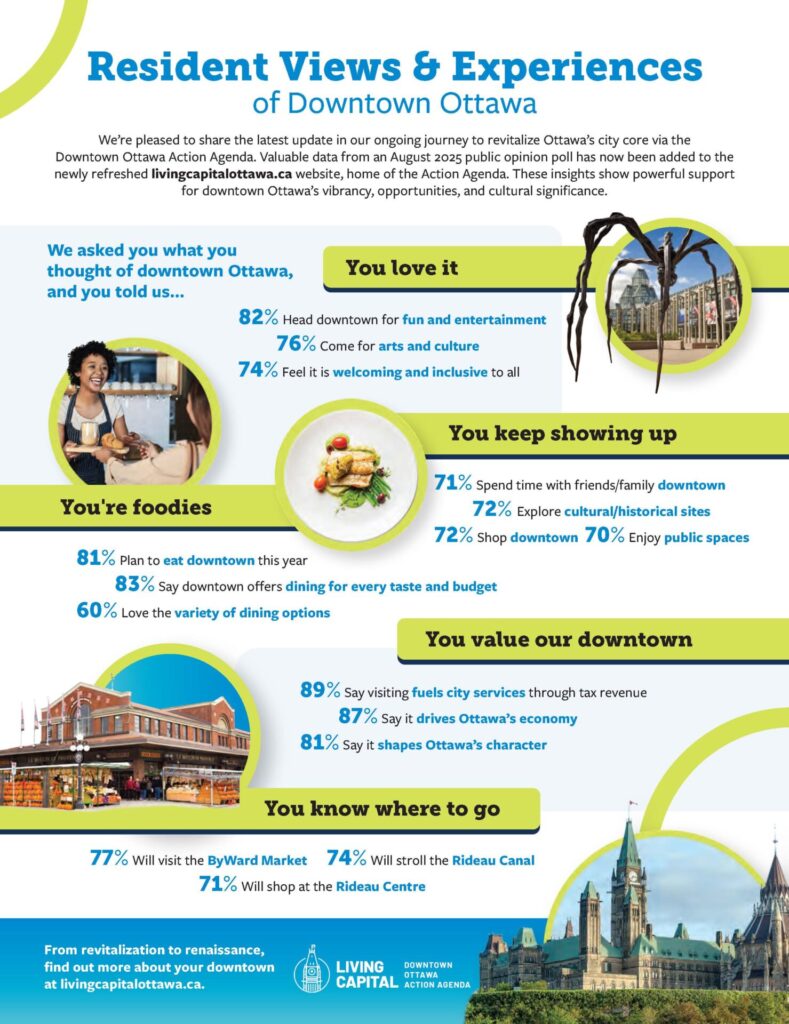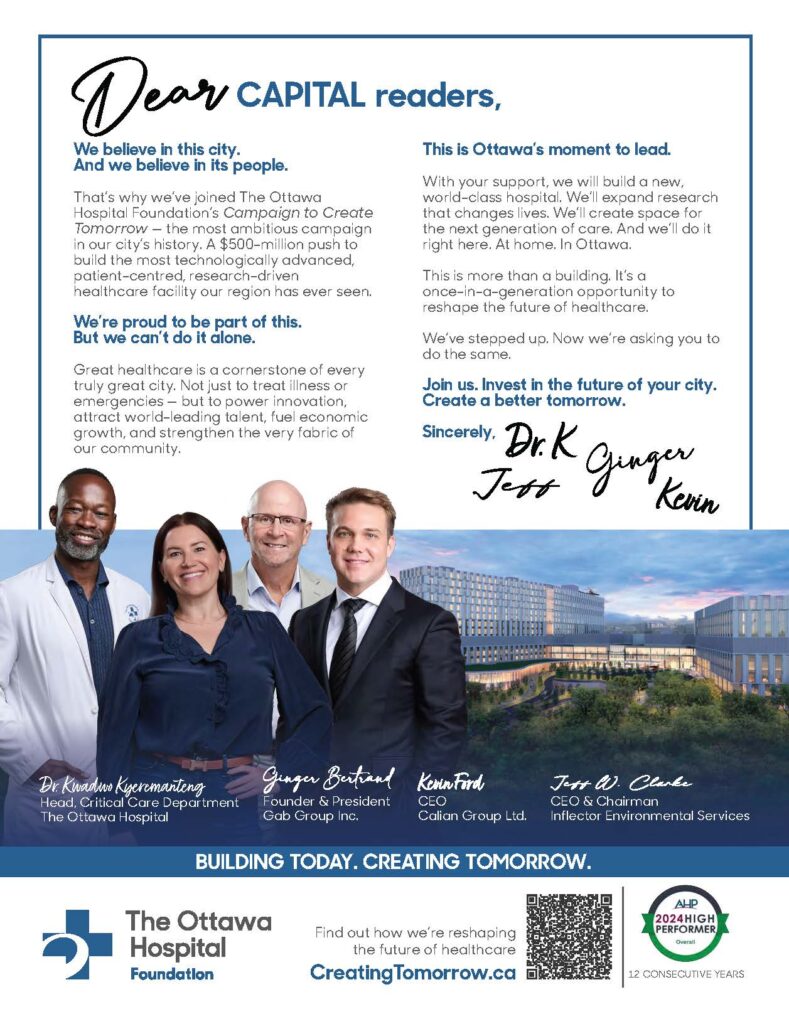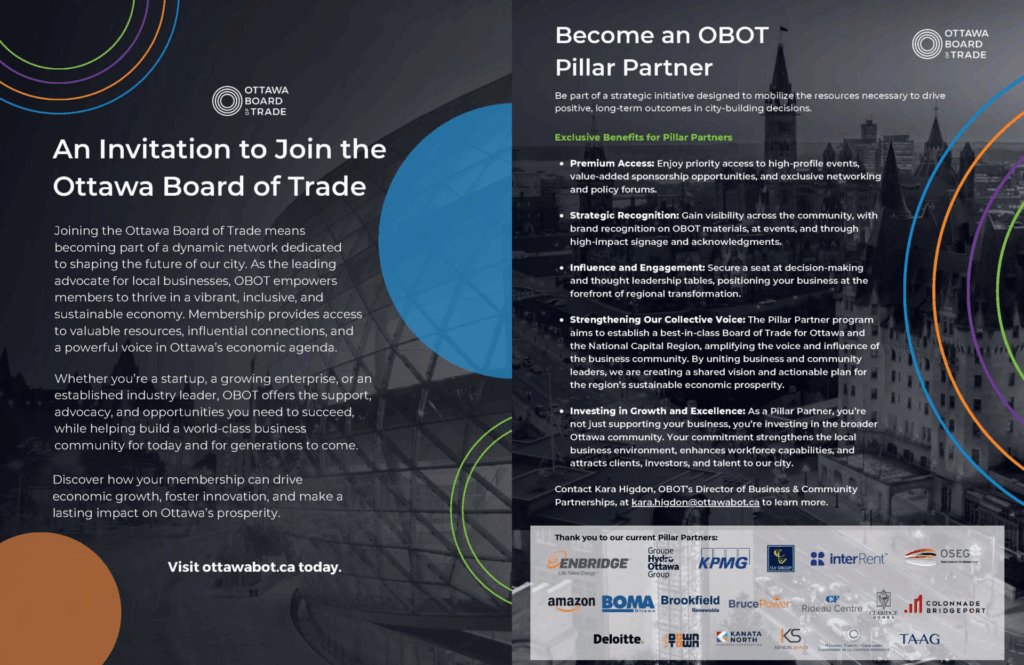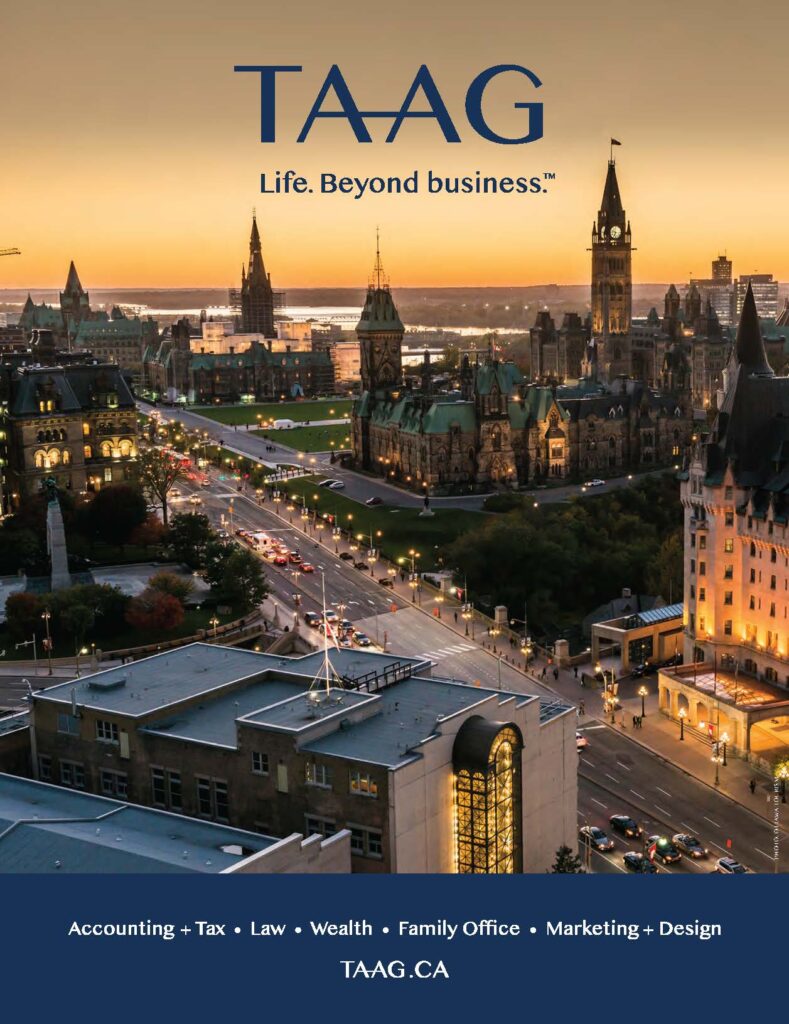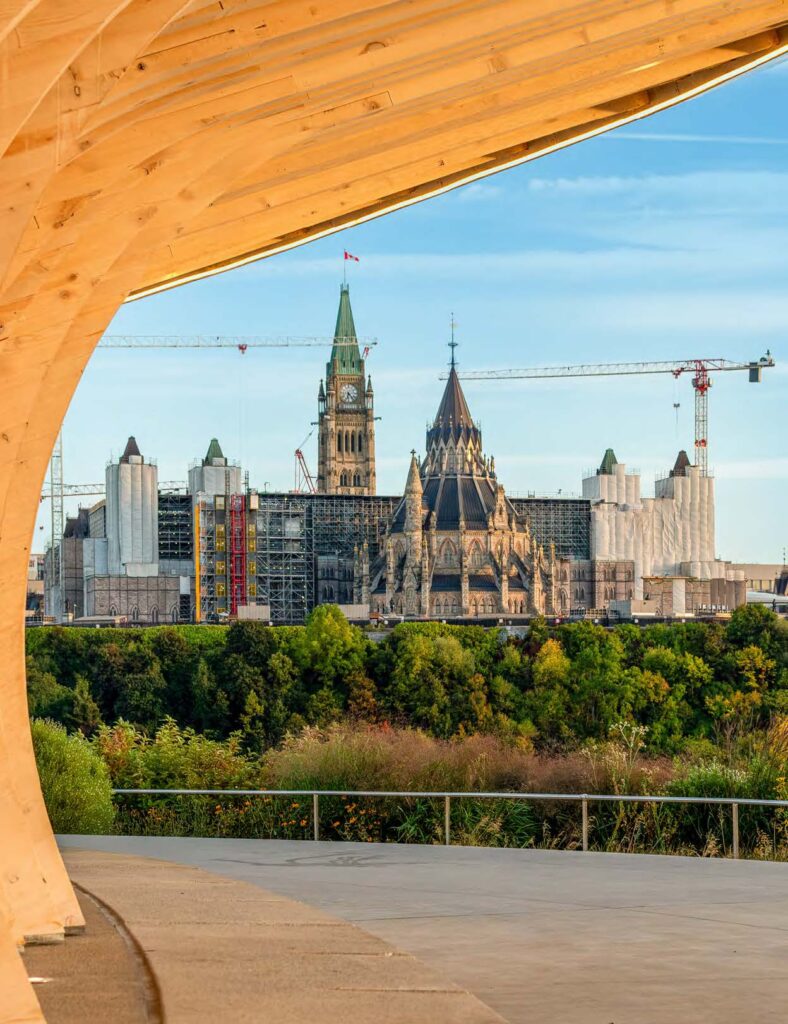C-SUITE VIEW – LRT, Enhanced Infrastructure Boosting Ottawa’s Status
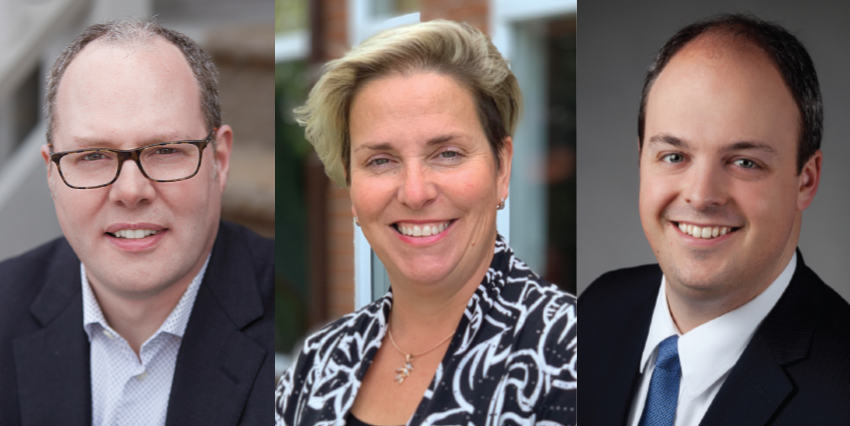
Toon Dreessen, President Architects DCA, Lisa Brush, Chief Executive Officer & Founder, Symphony Senior Living, Charles Mirsky, Vice-president of Brokerage, District Realty
By Jeff Buckstein
Since graduating from Carleton University’s School of Architecture in 2000, Toon Dreessen has had a front row seat to witness the significant structural growth Ottawa has experienced over the past two decades.
There are now more people working and living within the core urban area, interested in a community that is both walkable and well served by mass transit. This has helped spark redevelopment of historic downtown neighbourhoods, says Dreessen, the president of Architects DCA, and a public speaker and advocate for architecture being pivotal in shaping society and culture.
“People see value in not having a lengthy commute, and in being close to the amenities that they’ve grown up with. These can be communities that they’ve lived in as kids. Or an older generation that is empty nest that doesn’t want to leave the community they established roots in,” elaborates Dreessen, who is also the past president of the Ontario Association of Architects.
Charles Mirsky, vice-president of brokerage at District Realty, has also seen enormous change take shape in Ottawa since he joined that company to begin his career in 2006.
“When I first started we were regarded as a secondary market in certain circles. Now we’re regarded as a primary market or just under a primary market. We’re seeing more and more buyers and clients coming through Montreal and Toronto,” Mirsky says.
Mirsky believes the new LRT system is the most predominant evolution in Ottawa’s real estate market over the past 13 years, with the desire for businesses to locate close to the new rail lines having spurred massive growth and investment.
Moreover, “I think businesses are trying to accommodate the younger generation of millennials who are a bit more focused on transit and ease of transit, who are less likely to own a car, but more likely to use either the light rail or other forms of mass transit,” he notes.
Mirsky recounts how local land use has changed since 2006. At the beginning of his career, he says, Ottawa had many condominium projects on the go. Today’s trend involves a significant influx of and demand for multi-family developments. For example, District Realty is managing a property on Metcalfe Street that was an office building, but was converted to 61 apartments and a ground floor retail space.
“Another conversion that we stickhandled on Lisgar Avenue was the same sort of idea. We took the office space when there was a higher vacancy in the office market, and converted it to apartments, which shifted the use from a high vacancy market to a low vacancy market,” says Mirsky.
An aging population has also significantly impacted the growth of retirement homes in the NCR.
“There’s a lot going on,” says Lisa Brush. the chief executive officer and founder of Symphony Senior Living, which currently has four facilities in and around Ottawa—two in Orleans, one in Kanata and another in Carleton Place, housing almost 300 residents in total.
Over the past 18 months, many new seniors’ facilities, providing either independent living, or, at the other end of the spectrum, medical assistance, such as for individuals with memory care issues, have opened up in the NCR, she elaborates.
Brush expects continued development of retirement and medical facilities over the next decade as greater numbers of baby boomers retire and age further into their senior years.
However, she notes, many members of that generation are much better off physically, and facing a longer lifespan than their predecessors.
“I think you’re going to see two things.” Brush predicts. “You’re going to see these lifestyle type retirement communities focusing more on very active people. Then as they get into their 70s and 80s and their care needs really increase, that will be where the assisted living and the memory care private pay services come along,” she says.
Mirsky expects to see exciting new developments in the downtown core and surrounding areas.
“If we can get the east-west light rail up and running and extended to the outer suburbs and down south to the airport, I think that will dramatically change the impression that outside investors have on Ottawa,” says Mirsky who elaborates that ease of transportation access will make for a much more international city.
Despite the enormous development that has already taken place to date in the NCR, corporate leaders see room for improvement as the city’s infrastructure needs continue to expand.
Mirsky would like to see LeBreton Flats developed after decades of delay. “I believe the general consensus looking at the vacant land that’s down in this prime real estate is that it is a shame it has been sitting there idle for so long. It would be great to bring some activity and some energy down to that area,” he stresses.
“I’d like to see our city advance its thinking on how we create a better environment by working with architects to be able to envision a more engaged social network that contributes to a better, more sustainable, healthier city,” stresses Dreessen.
Dreessen would also like to see the City take a longer-term approach to the way it develops its infrastructure. “We see our infrastructure as something that is invested in over the short-term. We tend not to really think about what long-term means. That requires a shift in thinking about capital investment,” he says.
For example, investing in the construction of a new building that emits net zero carbon might cost 15 per cent more capital up front, but if it has net zero operating costs because it produces as much energy as it consumes, that means not having to pay utility bills, which can make a huge difference in cost and performance over the life-cycle of that building, stresses Dreessen.
“We need to invest in that kind of infrastructure, because otherwise we’re shooting ourselves in the foot. We’re creating buildings that are unsustainable for the long-term, and leaving future generations to pay the bills for that,” he warns.
